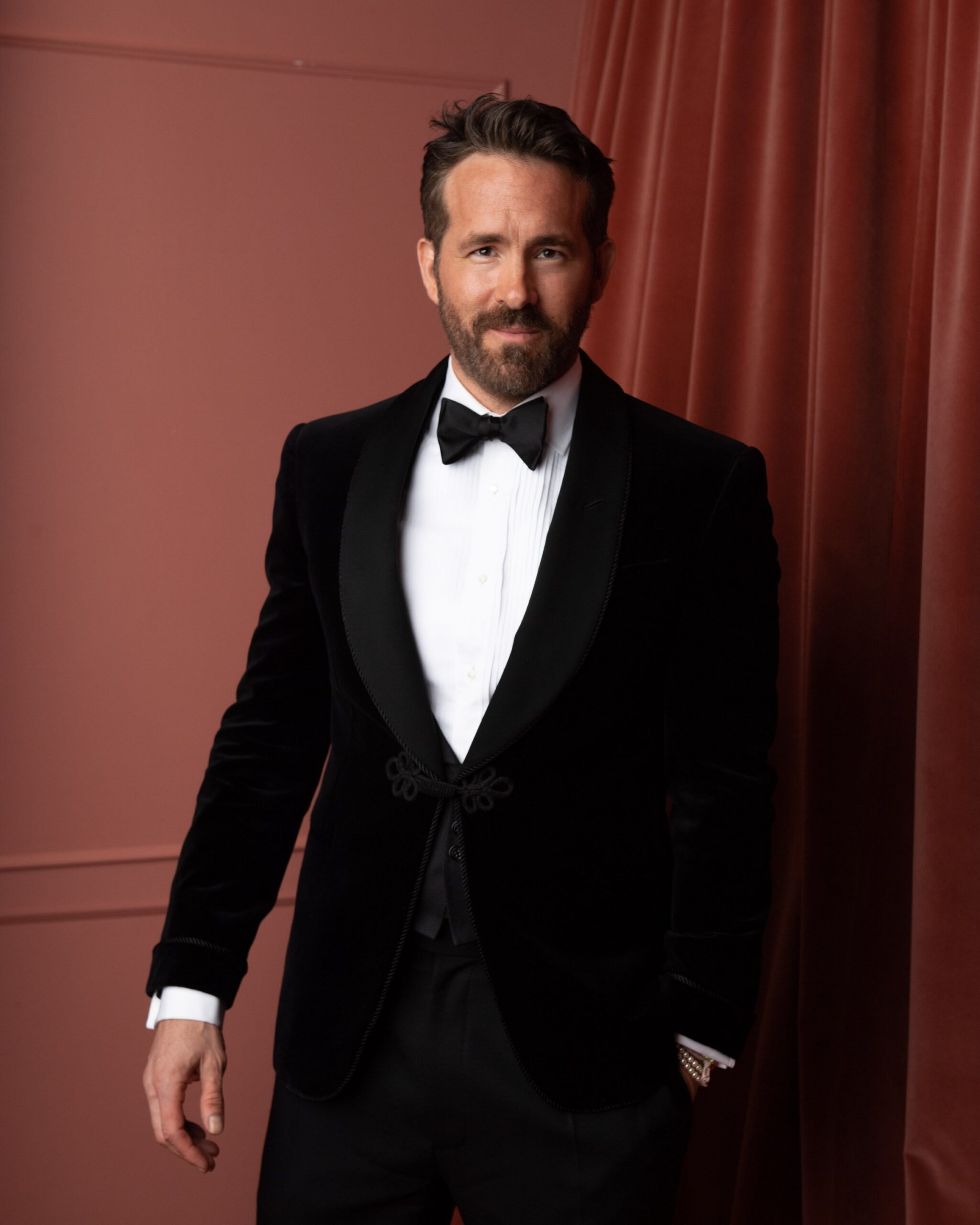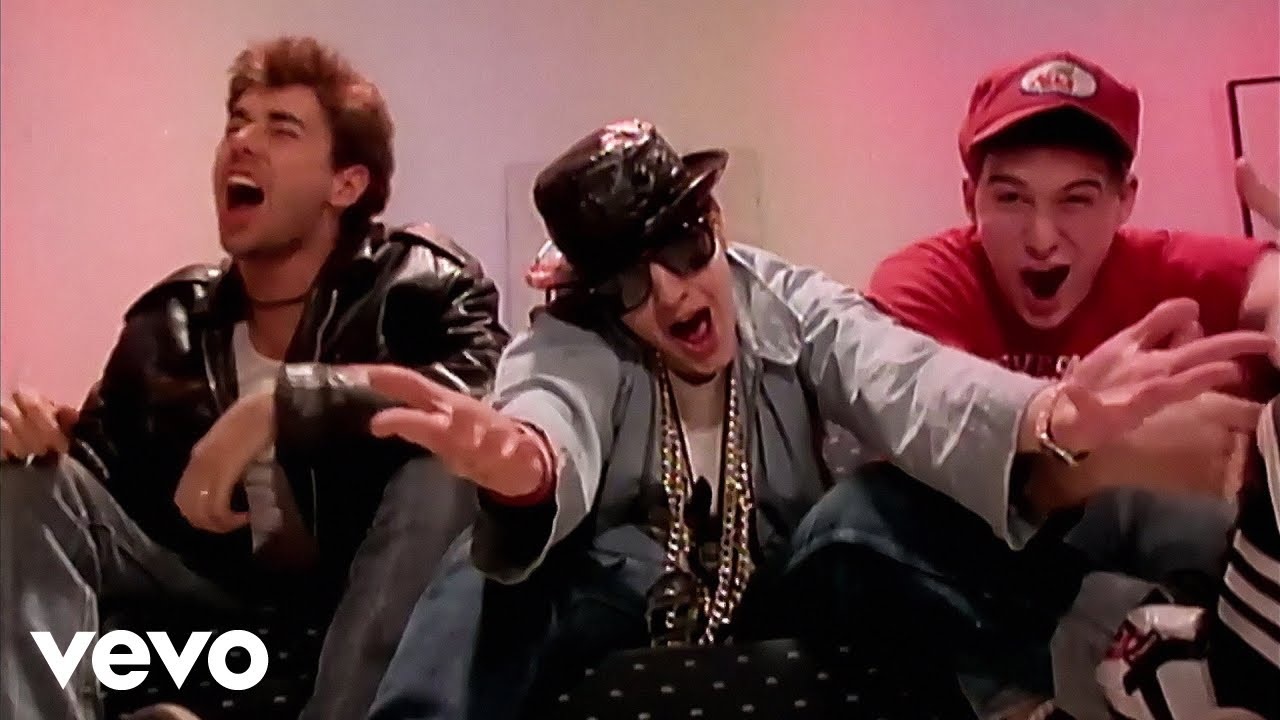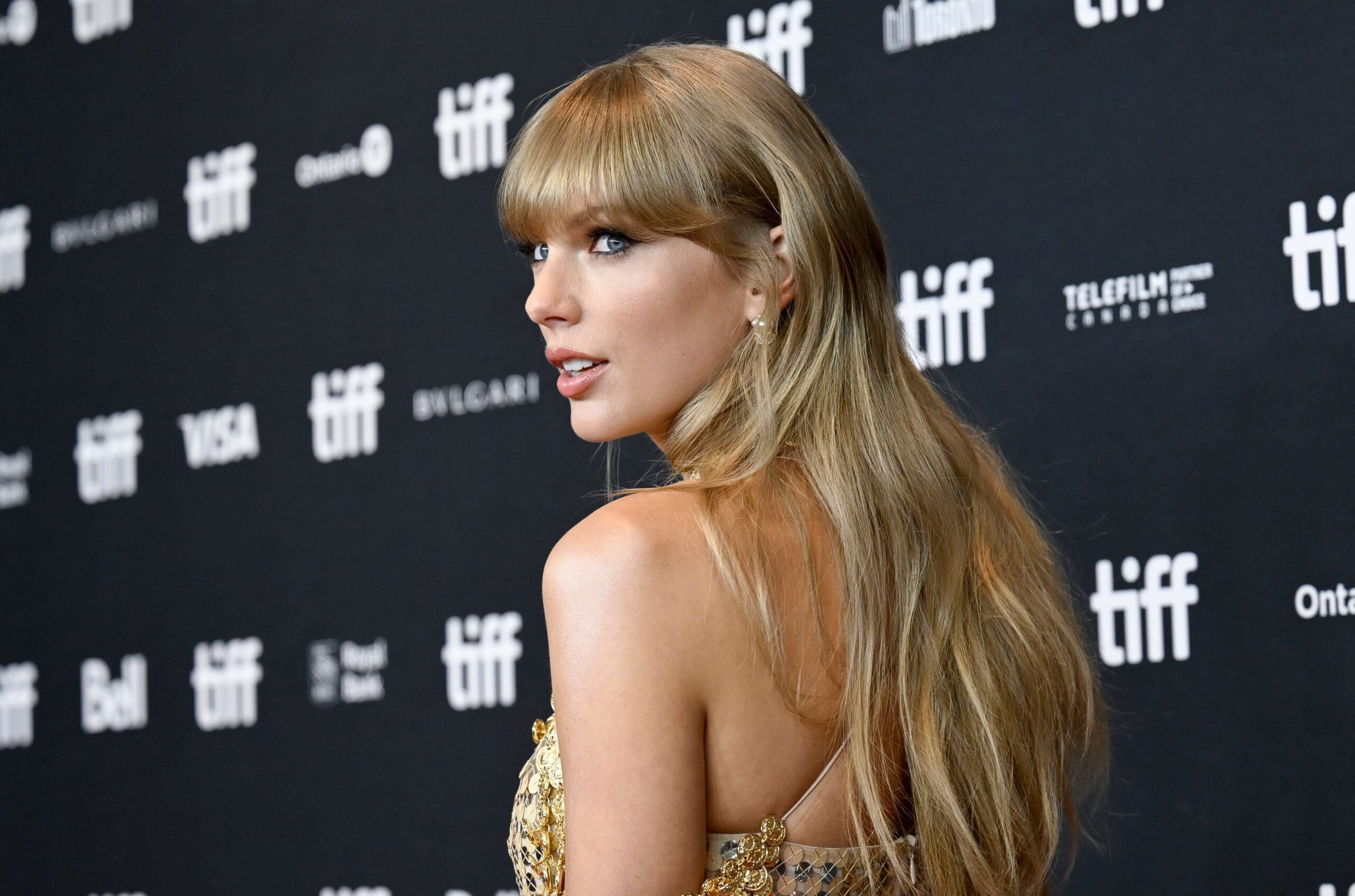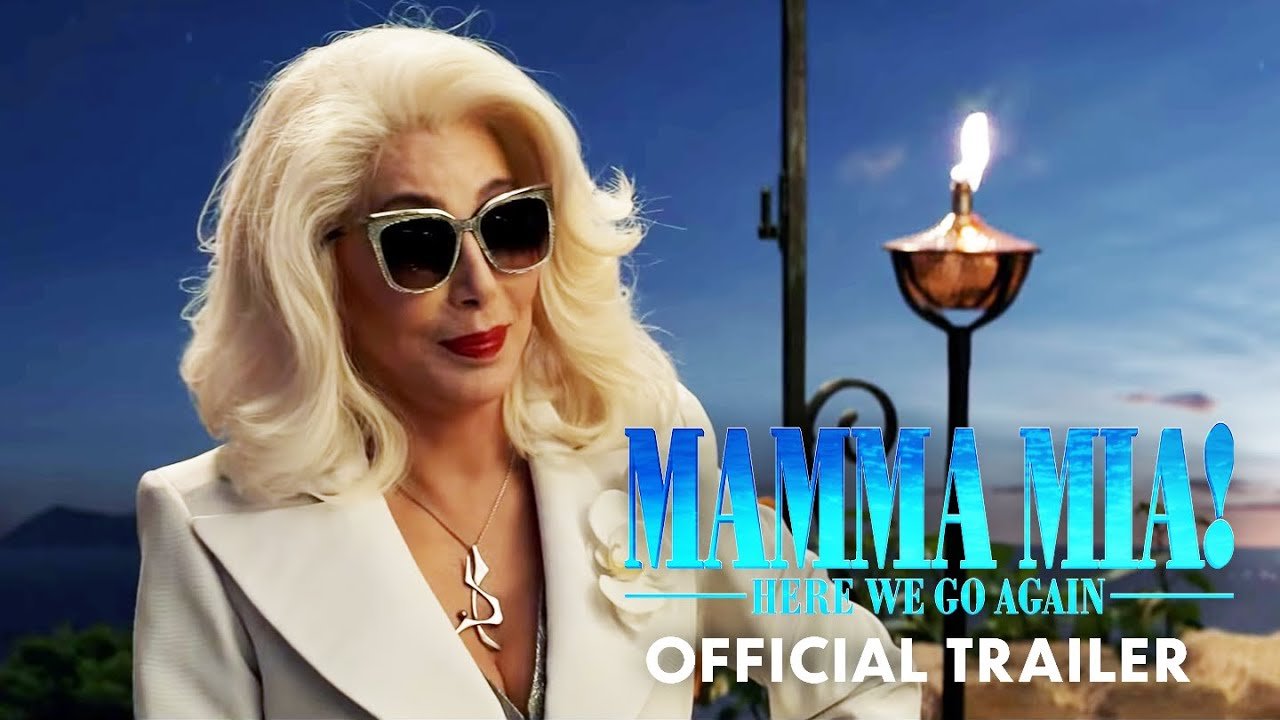
Photo by Joel Mott (Unsplash)
I’ve been lying about using dating apps since 2012.
In order of appearance in my life, Tinder, OkCupid, CoffeeMeetsBagel, Bumble, and Hinge have all occupied space on my shitty phone. I’ve shared my personal details with strangers who are probably in their underwear or on the toilet all over New York City. I love it. The most interesting conversations are profane and precious, like baby teeth or blood diamonds. They always start the same way–with an abrasive, sweaty message, oblivious to the boundaries of the social contract and grammatical correctness.

I figured out the best way to enjoy Tinder is to switch phones with a friend of any gender and delve into the dating world from their perspective. This way, I’ve gotten to experience dating apps as a 24-year-old Egyptian-American film student, a 23-year-old tall, blond social media manager, and a 31-year-old MFA-holder from Queens who bears a striking resemblance to Benedict Cumberbatch. In return, my friends have stepped into my shoes as a 5-foot-tall, 28-year-old Korean-American chick in Brooklyn. I’m fascinated with the kinds of restrained, polite messages they receive, and they’ve experienced firsthand some of the bizarre, fervent, and emoji-laden love notes that fill my inbox.


Being Asian on a dating app makes for a unique experience. Last year, Adam Chen published his dispirited take on Buzzfeed News: “Being Asian On Tinder Means Getting Rejected Or Fetishized And Neither Feels Good.” As an Asian-American male, he fits neither the exotic FOB (“fresh off the boat”) persona nor the weird effeminate K-pop vibe. He describes being subjected to the uncomfortable attention of someone who has “yellow fever,” as well as the outright rejection of rarely receiving Tinder’s congratulatory “You’ve matched!” message.
As an Asian female, my experience is vastly different from that of an Asian male, though just as hopeless about today’s avoidant, unromantic, online dating culture. Thanks to the rich and creative history of Western culture exoticizing and objectifying Asian women, I get a lot of matches. I get too many matches. I get a disturbing amount of matches. Some of the actual introductory messages I’ve received have included, “I didn’t know Asians could have freckles!” (in fact, they cannot. I’m just a genetic experiment gone wrong), as well as, “Please like me back, I need more Asian friends!” (Yes, exclamation marks are genuine).
Yet, I’ve detected fascinating patterns in the type of messages I receive, especially under the free-for-all policies of Tinder and OkCupid. When I change my app’s settings to seek men between ages 21 and 45 (seeking other women on Tinder deserves its own study), an inordinate amount of messages are from senders in the 35-45 age bracket. This could be indicative that older single men on dating apps are too aware of their own mortality to feel shame; or, I could interpret this as a demoralizing sign of Woody Allen-syndrome: young Asian women are a strange, special object of desire for older white men. Either way, after seven years of studying the bizarre ethos of online dating, I’m ready to publish my official findings.
Type 1: Uncomfortable Sharing
What I’ve found in my studies is that there are three types of weird messages: Uncomfortable Sharing, S-E-X, and Oh No. Let’s examine the first. These messages are sent unabashedly throughout the early evenings into the modest hours of the night, are from senders displaying out-of-focus profile pictures taken from a distance. And they often use clever pseudonyms, like MisterMajesty78. Messages range from unleashed streams of consciousness that try to compliment and impress you while also crying out for help to concrete plans to meet in person ASAP. In some instances, my friendly fellow researchers and I crafted a response to further our study of modern dating culture and why it’s morally fine if none of us choose to have children.

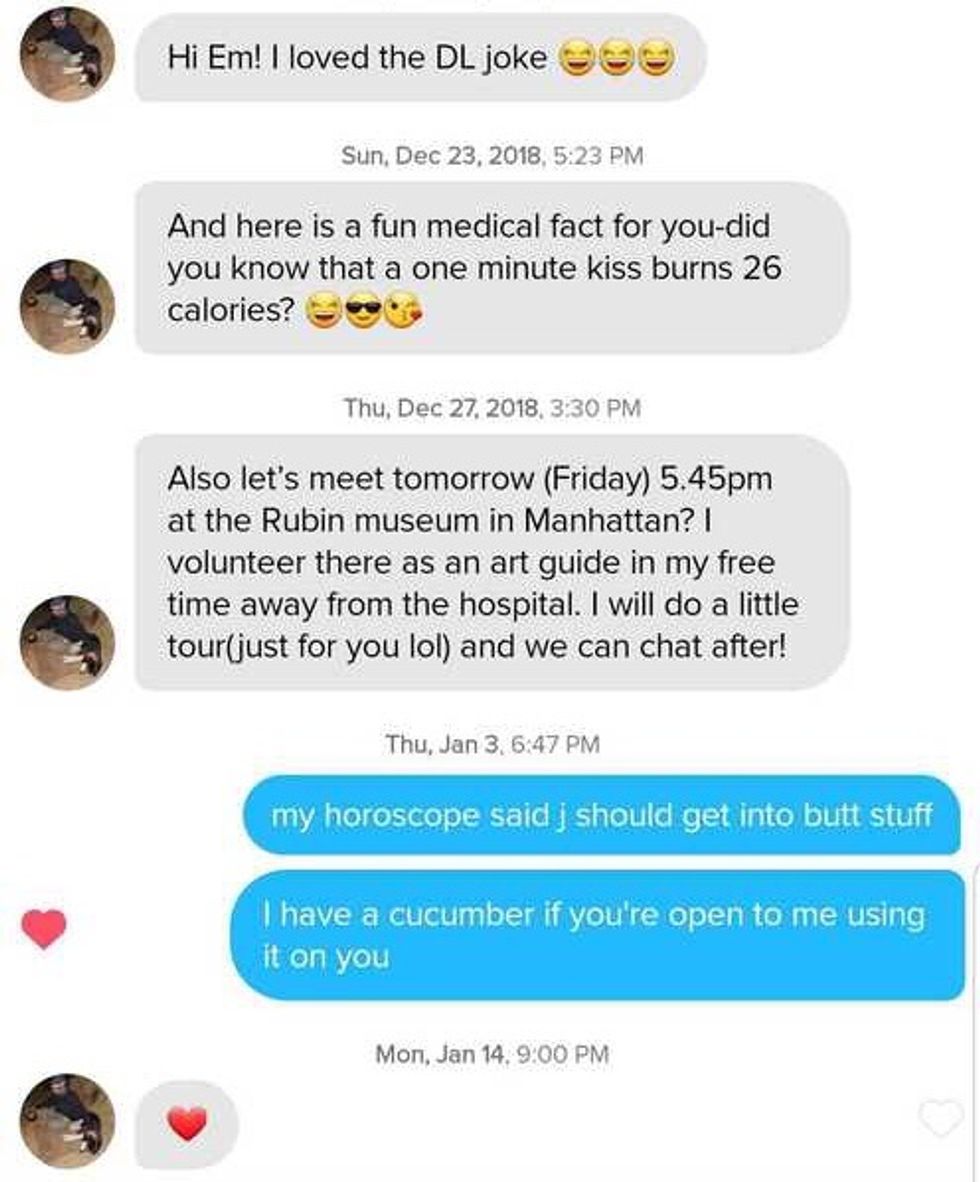
Type 2: S-E-X
The second type of message is very forward about what the sender wants, intrepid about asking for it directly, and will not-so-gently remind you that shame is a social construct in the age of the eggplant emoji. Unlike Type 1, these senders choose to communicate in the middle of the afternoon on a weekday or, more proactively, even before one’s morning commute. Variations of this type include pithy one-liners meant to sexually arouse with astonishing wit, as well as requests for self-evaluation of one’s willingness to experiment in the bedroom. Who knew Tinder’s full of Kinsey-like sex scientists?



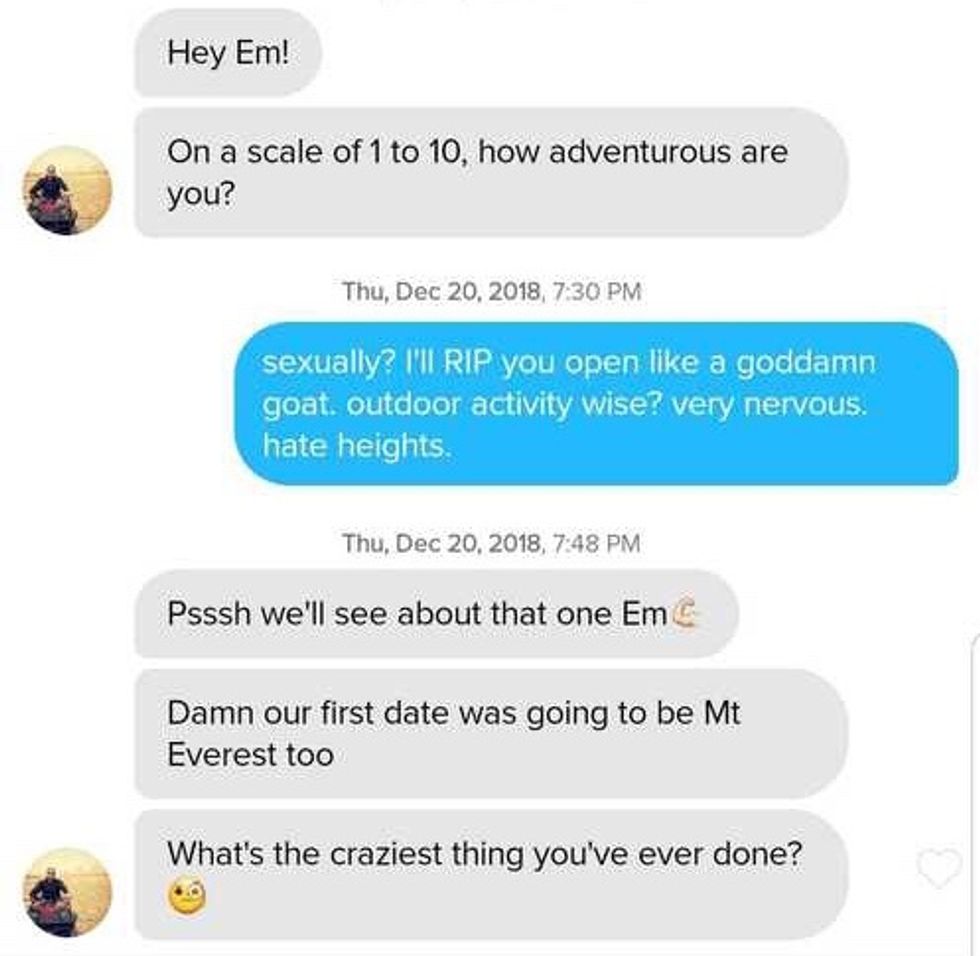
Type 3: Oh No
This type excels in persistence. After receiving no response, the sender has no reservations about reminding you that you are ignoring him. Usually sent without any regard to the time of day or night, the speaker is very expressive of one’s concern, rarely uses emojis, and often displays a selfie taken very close to his face.
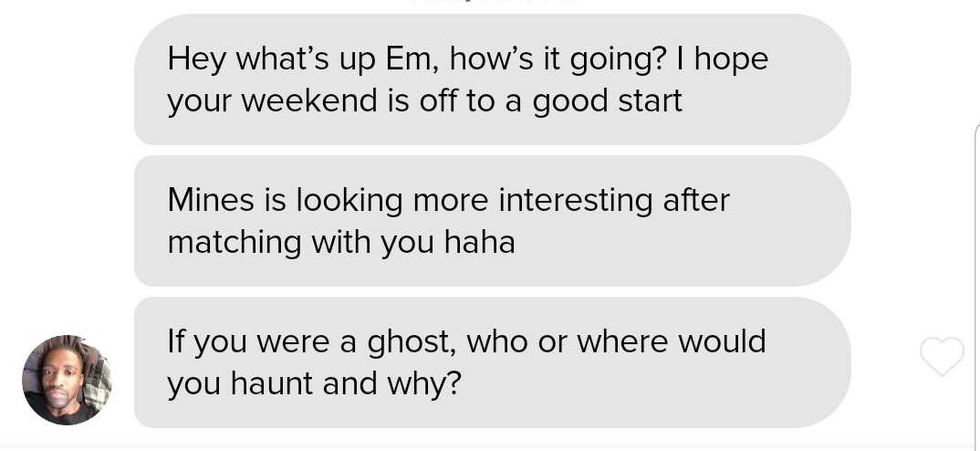
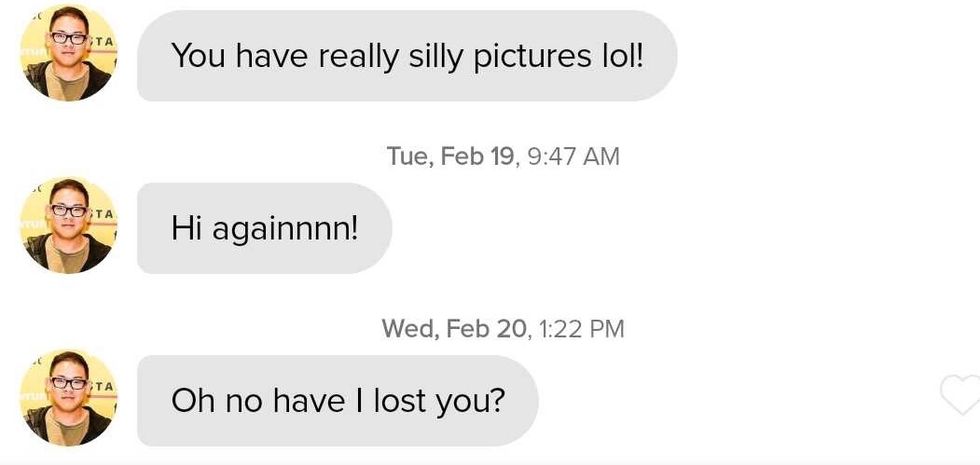
Conclusions
This Asian woman’s experience in online dating probably overlaps with most women’s experiences, in that I’ll never understand the assumptions single men make about what women want to hear. Is a woman obligated to respond to a message on a dating app? Of course not, and neither is a man. Everybody has a right to ignore everybody, and anyone can become a Type 3 when the average Tinder user wastes 90 minutes a day mindlessly swiping. Questions for further study include: Are dirty one-liners still used because they’re ironic? Or are they so ironic now that senders are genuinely hopeful? If I were a ghost, who or where would I haunt? I hope the resident in my building always blasting EDM is willing to switch phones so I can further my studies.
POP⚡DUST | Read More…
It’s Not about Race: Colorism in Hollywood
Post-Ironic Media: How We Memed A President Into Office
Welcome to Genderqueer TV: 5 Non-Binary Characters
- Watching Netflix’s “Tall Girl” as a Short Guy – Popdust ›
- How Asian Men Became Hot in Hollywood – Popdust ›
- Dating as an Asian guy sucks, but here’s how I cracked the code. ›
- ‘Asian, ew gross’: How the ‘Crazy Rich Asians’ movie could help … ›
- What Makes Asian-American Men ‘Undateable?’ – Women’s Media … ›
- Dating Asian-American Men | Psychology Today ›
- 9 Asian-Americans Get Real About What It’s Like To Date In 2018 … ›
- The Disappointing Reality Of Online Dating As An Asian-American … ›
- Asian American Men in Romantic Dating Markets – Grace Kao, Kelly … ›







